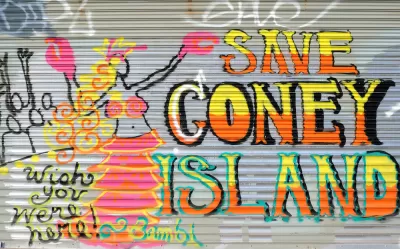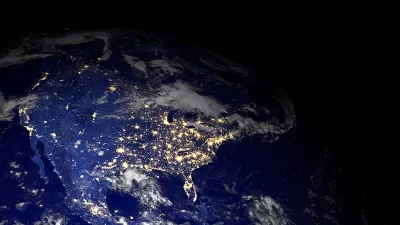The Guardian’s new "Gentrified World" series tackles a fundamental—but tricky—question: How can we measure gentrification?

Cities must be able to understand and measure gentrification in order to prevent displacement, impoverishment, and resegregation, writer Douglas Murphy argues in The Guardian. Rising housing costs are a beginning, but they're not a reliable indicator on their own. In a new Guardian series, "Gentrified World," Murphy surveys an array of variables researchers have identified to pin down gentrification.
Work from NYU, the Voorhees Center, UC Berkeley and UCLA's Urban Displacement Project, and elsewhere has suggested that proximity to transit stops, types of housing, education levels, and population density, as well as cultural phenomena like the presence of coffee shops, are all indicators of gentrification in progress.
But like other social and economic processes, while gentrification happens around the world, it often takes on locally or regionally specific dimensions.
For example, the particular character of American inequality means that race is frequently considered to be a major factor. The late 20th century saw the white middle classes largely abandoning the inner cities, and an increase of white residents is now taken to be a sure sign of gentrification. But this metric can’t apply in less politically segregated contexts.
Ultimately, Murphy posits that the same indicators, however varied, likely can't be applied uniformly everywhere:
The wide variety of research shows that a single, universal measurement of gentrification is probably impossible, with all the fraught political and cultural considerations at work.
Find a more detailed accounting of the various types of evidence—including public perception and the "I know it when I see it" factor—and the importance of data communication in the piece.
FULL STORY: Crime stats or coffee shops? How to spot the world's most gentrified cities

Alabama: Trump Terminates Settlements for Black Communities Harmed By Raw Sewage
Trump deemed the landmark civil rights agreement “illegal DEI and environmental justice policy.”

Planetizen Federal Action Tracker
A weekly monitor of how Trump’s orders and actions are impacting planners and planning in America.

The 120 Year Old Tiny Home Villages That Sheltered San Francisco’s Earthquake Refugees
More than a century ago, San Francisco mobilized to house thousands of residents displaced by the 1906 earthquake. Could their strategy offer a model for the present?

Indy Neighborhood Group Builds Temporary Multi-Use Path
Community members, aided in part by funding from the city, repurposed a vehicle lane to create a protected bike and pedestrian path for the summer season.

Congestion Pricing Drops Holland Tunnel Delays by 65 Percent
New York City’s contentious tolling program has yielded improved traffic and roughly $100 million in revenue for the MTA.

In Both Crashes and Crime, Public Transportation is Far Safer than Driving
Contrary to popular assumptions, public transportation has far lower crash and crime rates than automobile travel. For safer communities, improve and encourage transit travel.
Urban Design for Planners 1: Software Tools
This six-course series explores essential urban design concepts using open source software and equips planners with the tools they need to participate fully in the urban design process.
Planning for Universal Design
Learn the tools for implementing Universal Design in planning regulations.
Clanton & Associates, Inc.
Jessamine County Fiscal Court
Institute for Housing and Urban Development Studies (IHS)
City of Grandview
Harvard GSD Executive Education
Toledo-Lucas County Plan Commissions
Salt Lake City
NYU Wagner Graduate School of Public Service





























